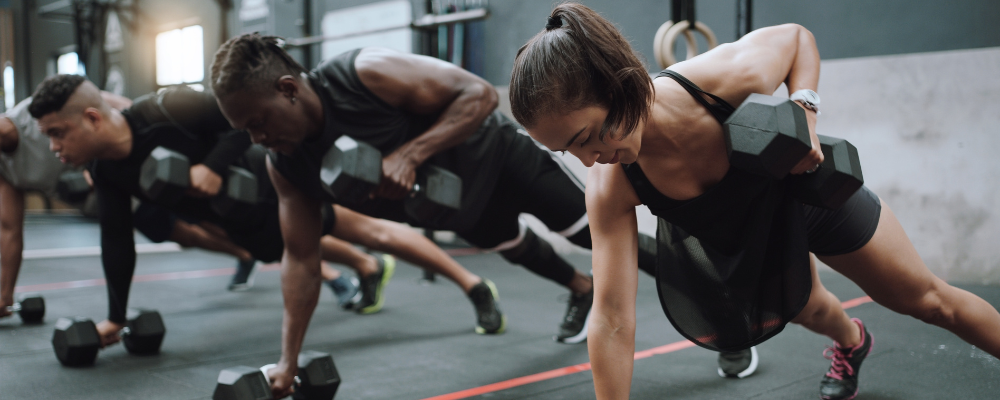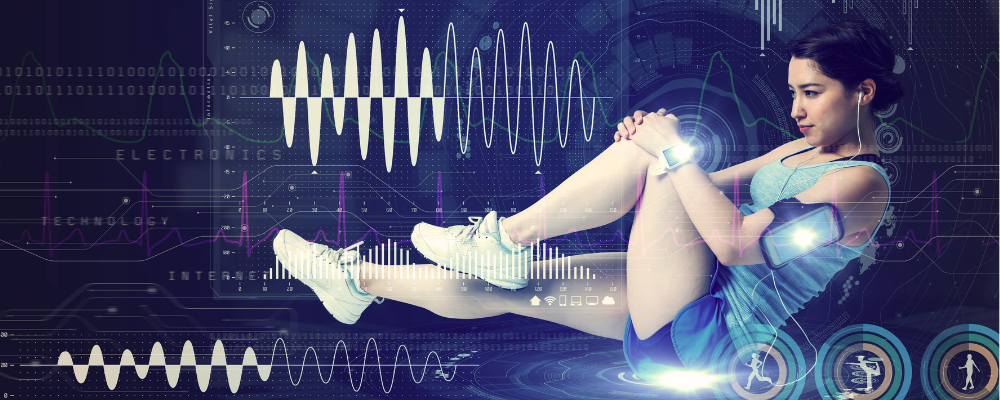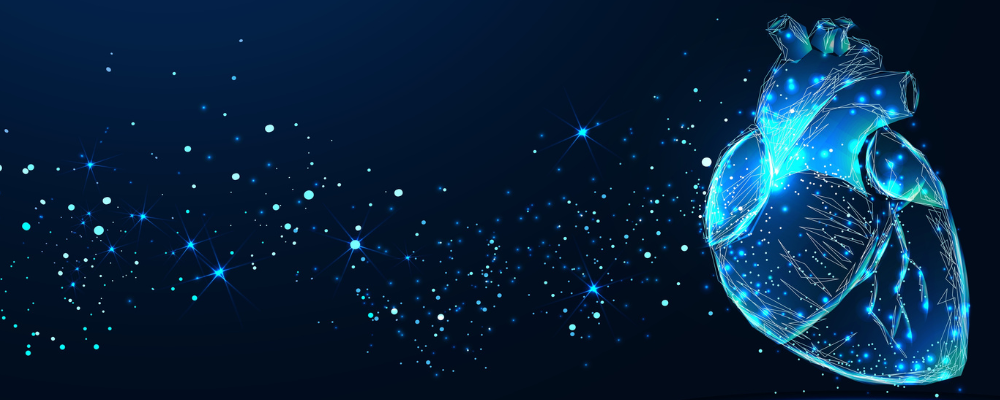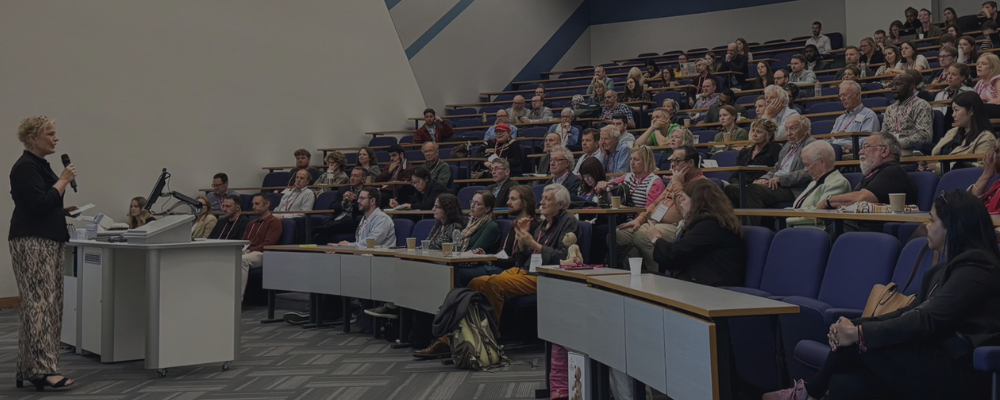
Intricacies and complexities of muscle architecture and function
Dr Sophie Joanisse, Assistant Professor in Exercise Science, University of Nottingham, UK
How does skeletal muscle get bigger? What supports the growth? We interviewed member Dr Sophie Joanisse to find out more about her research on the molecular mechanisms involved in muscle repair and regeneration. As well as the fascinating intricacies and complexities of muscle architecture and function, we discuss the challenges of starting out your academic career during a pandemic and publishing results that contradict an established model.
Sophie Joanisse studied at Laurentian University, Canada, where she completed a BSc in Kinesiology and a MSc in Human Kinetics. Set on working on human physiology, Sophie went onto McMaster University, Canada, and joined their department of kinesiology with experts in exercise and muscle physiology to shift away from rodent models and focus on human tissue. “It seemed like the place to be,” she says of her experience working in the inspiring department and where she completed her PhD in Kinesiology. She is now Assistant Professor in Exercise Science at University of Nottingham, UK, working on muscle specific stem cells and their role in skeletal muscle remodelling, repair and regeneration. She is a member of The Physiological Society, working on our Scientific Conferences Committee.

“I’ve come full circle,” celebrates Joanisse of her journey with The Society. As well as being a member of The Society’s Scientific Conference Committee, Joanisse is a scientific meeting organiser and presenter at our upcoming meeting, The Biomedical Basis of Elite Performance 2024. Navigating the Covid pandemic as a new lecturer and researcher was tough, but Joanisse’s career move to the UK from Canada helped increase her awareness and network of Society members. “It was nice to have a community, and have access to a range of different resources from teaching to research, which I found really helpful when starting out as a new lecturer,” shares Joanisse.
“I was lucky to receive a research grant award of £10,000. This opened up so many doors for me, and helped me buy pieces of equipment and get projects going.” Last summer, Joanisse presented the data from her grant project on ‘The effects of female sex hormones on human skeletal muscle: An ex vivo/in vitro approach’ at Physiology 2023. “I’m excited to go on to collect bigger data and establish more independence as a researcher,” she says.
Mechanisms and supporting roles
How skeletal muscle functions and its plasticity has long fascinated Joanisse, who has focused her studies and research understanding muscle repair and regeneration. “The muscle is a complex tissue with a highly organised cytoarchitecture,” she shares when speaking about the thrills and challenges of working on muscle, intrigued by the multitude of events and players required for the muscle to repair itself.
“Muscle repair is an intricate process, that consists of lots of different stages,” she explains. “There is a combination of factors that can directly turn a muscle on or off. There are also systemic factors, where the impact cascades down through a mechanistic pathway. Despite each stage being distinct, they can each be strangely related,” she says. To understand how all the parts in the puzzle work and fit together, Joanisse is working on the molecular mechanisms and a group of muscle specific stem cells.
The group of specialised muscle stem cells, also known as satellite cells, play a major role in muscle growth, remodelling and adaptation. “If a muscle is missing its satellite cells, it won’t repair. It just doesn’t work.” Figuring out how satellite cells support the repair and regeneration of the muscle has been Joanisse’s aim.
Muscle repair in response to exercise
When exploring the impact of exercise on the body, the terms ‘muscle damage’ and ‘muscle repair’ are frequently used. “By no means is exercise causing widespread destruction to the muscle. We mean that exercise forces the muscle to adapt,” explains Joanisse. She adds, “During exercise training, whether that is aerobic training or resistance training, the muscle will change and adapt. This includes hypertrophic adaptations, which is when the muscle gets bigger. Evidence shows that satellite cells are important in controlling this” (Bellamy et al., 2014).
But how do satellite cells fulfil this function? It was during her postdoctoral fellowship at McMaster University, Canada, that Joanisse worked in a team in Professor Gianni Parise’s lab, with Professor Stuart Phillips and other graduate students to investigate how satellite cells support muscle hypertrophy (Thomas et al., 2022).
What supports muscle growth?
“We asked participants to complete a preconditioning protocol, which involved six weeks of aerobic training using a bike,” Joanisse says. But there’s a twist, the aerobic training was only completed in one leg. So, one leg cycles while the other leg is resting.
This unilateral form of exercise training enabled the team to compare an aerobically trained limb vs an untrained limb. The next part of the study involved resistance training to observe changes in muscle size. As well as comparing muscle adaptation, Joanisse and the team took muscle biopsies from the study participants to study the satellite cell response to the acute mode of exercise training.
“The muscle in the aerobically trained leg responded better to the resistance training showing greater hypertrophy than the muscle in the untrained leg. The satellite cell response also varied between the trained vs untrained leg (Brown et al., 2022).” The machinery responsible for the differing cell response is still not completely known but they chose to explore this a bit further.
What drives the increase in muscle size?
Ribosomes are small organelles that translate protein and serve an important role in protein synthesis, which is needed during hypertrophy. Rodent models have proven that when there are increases in muscle size, the number of ribosomes increases to support the muscle growth (Kirby et al., 2025; Nakada et al., 2016). “Much to our surprise, this wasn’t the case in our human study. The participants with the greatest gains in lean mass after resistance training, had the lower number of ribosomes. Our results contradicted our hypothesis,” she says.
The relationship was counter-intuitive to what Joanisse and the team had expected to see based on the evidence from the exemplary rodent models but was in-line with other work completed in humans (Phillips et al., 2013). Going deeper into the molecular elements, the participants with the greatest muscle gain also had the smallest change in the genes related to ribosomes. The question then becomes, is it the total number of ribosomes or the efficiency of each individual ribosome that matters most to support muscle adaptation and hypertrophy?
Ribosomes, the power of one or many?
“We are still unpicking this,” says Joanisse, adding “It could be that muscle growth relies on a fewer extremely efficient ribosomes that can quickly synthesise many new proteins, vs having a lot of ribosomes that are not as efficient and aren’t manufacturing new protein at the rate we’d expect.”
The study results challenged the rodent model, which divided opinion among the research community when the work was published. Despite the initial mix of positive and negative views, the study results have been accepted and even spurred new ideas from other research groups to investigate muscle adaptation and hypertrophy from different angles.
“Rodents are extremely useful models, but it is important that we test our theories in humans,” says Joanisse. “Our study is just one case showing how physiological processes can vary between species, emphasising how mechanisms and pathways that work for one species might not be true for another.”
Potential therapeutic applications
Fully understanding the mechanisms of muscle repair and regeneration could one day open broad possibilities for interventions in ageing, sport performance and rehabilitation. “Research on repair mechanisms could help us to maintain and improve muscle function as we age, or aid athletes in understanding how to maximise their sport performance, or help us recover muscle mass lost from injury.”
“There are a variety of avenues that could be pursued, but to tackle these research questions we need to adapt experimental methods and analytical tools.” Joanisse refers to the limits in the number of human biopsy samples that can be taken during a study. Also, most analytical tools are optimised for rodent tissue. The challenge excites Joanisse, “I enjoy tinkering with study designs, new methods and tools. We want to maximise the samples we can obtain from volunteer human study participants for their burden in taking part in research studies, also to adapt tools to handle the same quantities of human tissue as rodent samples.”
Pursuing a career in exercise/muscle physiology
From working on a PhD project that would challenge the common dogma on the sole importance of satellite cells in supporting hypertrophic adaptation and repair to Assistant Professor dedicated to disentangling the intricate web and process of muscle repair, we asked Joanisse to share her career advice. “I’ve been lucky that I’ve had fantastic mentors throughout my career,” says Joanisse. Her supervisors were a guiding force, motivating and encouraging her to pursue her own interests and ideas in research.
Joanisse learnt a great deal from having a one-to-one interaction and close working relationship with her supervisors. “It makes a difference knowing that your supervisor is always there to ask questions. It was through working with her supervisors that got Joanisse hooked on a career in research. “I learnt from someone who had been through it and done it all. I wasn’t learning on my own or from the other students. I am thankful for that experience.”
Supervisors can help and inspire us, but we ourselves need to put the effort in to pursue our interests and make a career out of it. “You must do the groundwork and think about what interests you most and search for the opportunities.” Joanisse adds to not be afraid of reaching out to people, “Emailing someone is never going to hurt. The worst that can happen is they say no or don’t respond.”
Joanisse also reminds us that we need to make the decision that’s best for us, “Choose to do a PhD because that’s what you want to do. Don’t do something just because you feel that you should.” We look forward to hearing more about Joanisse’s research at The Biomedical Basis of Elite Performance 2024 this December.
You can hear more about Sophie Joanisse’s research on molecular mechanisms in muscle repair and regeneration at The Biomedical Basis of Elite Performance 2024 on Thursday 19 December – Friday 20 December 2024. Read the programme to find out more about the topics, including injury and rehabilitation, altitude physiology and maximising muscle adaptation to exercise training. Register by 28 November 2024 to join us!
References
Bellamy LM et al. (2014). The acute satellite cell response and skeletal muscle hypertrophy following resistance training. PLoS One 14;9(10):e109739. https://doi.org/10.1371/journal.pone.0109739
Brown A et al. (2022). Aerobic conditioning alters the satellite cell and ribosome response to acute eccentric contractions in young men and women. Am J Physiol Cell Physiol 1;323(6):C1577-C1585. https://doi.org/10.1152/ajpcell.00418.2022
Kirby TJ et al. (2015). Blunted hypertrophic response in aged skeletal muscle is associated with decreased ribosome biogenesis. J Appl Physiol (1985)15;119(4):321-7. https://doi.org/10.1152/japplphysiol.00296.2015
Nakada S et al. (2016). Correlation between Ribosome Biogenesis and the Magnitude of Hypertrophy in Overloaded Skeletal Muscle. PLoS One 29;11(1):e0147284. https://doi.org/10.1371/journal.pone.0147284
Phillips BE et al. (2013). Molecular networks of human muscle adaptation to exercise and age. PLoS Genet 9(3):e1003389. https://doi.org/10.1371/journal.pgen.1003389
Thomas ACQ et al. (2022). Short-term aerobic conditioning prior to resistance training augments muscle hypertrophy and satellite cell content in healthy young men and women. FASEB J 36(9):e22500. https://doi.org/10.1096/fj.202200398RR



